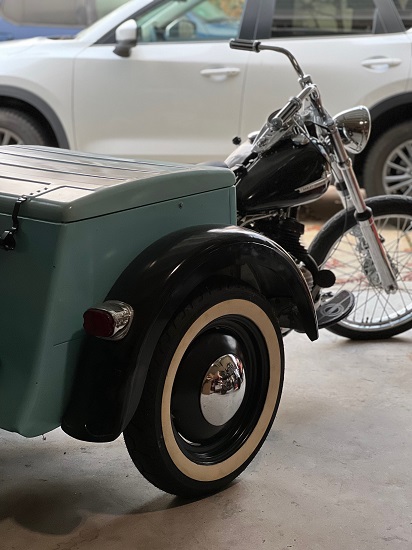Servi-Car Frame (Identification and Inspection)
Text and Pictures by Mark Trotta
Over the course of it's 41 years in production, the Harley Servi-car frame received several major and minor changes.
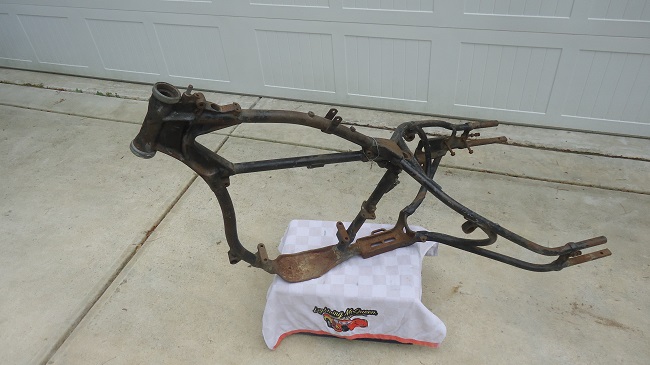
Early Servi-Car Frames
1932-1936 - These early frames were designed for the D-series 45 flathead motor, and later G-series motors will not fit. Transmission cradle accepts two-bolt transmission only. Neck angle on early frames is 25 degrees. There are no gas tank mounts. The instrument panel was fork-mounted and there was no steering head lock.
1937-1940 - Frames now have a 23-degree neck angle, which stayed in use until 1973. All W- and G-series motors will fit. There are now gas tank mounting tabs. 1940 is last year of the two-bolt transmission cradle.
1941-1950 - All frames from 1941 and up accept three-bolt transmissions.
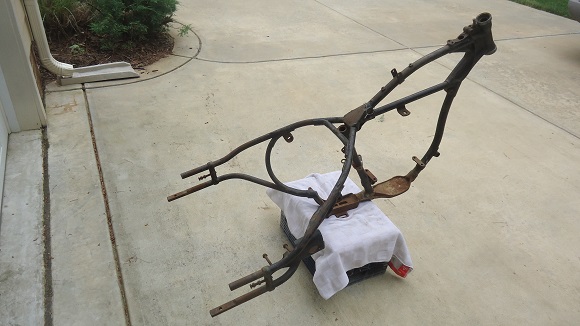
Mechanical to Hydraulic Rear Brakes
Early models (1932-1950) have mechanical brakes in the rear and no master cylinder was required. Starting in 1951, rear hydraulic brakes were fitted, which required a master cylinder.
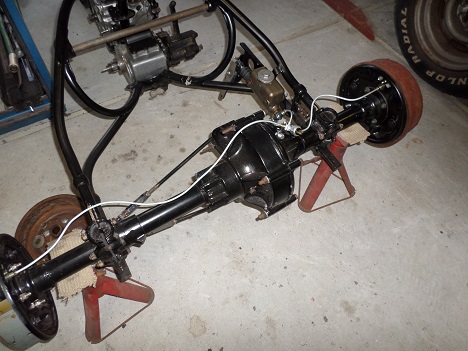
From 1951 on, there is a master cylinder bracket located between the lower-right rear frame tube to upper-right rear frame tube, just in front of the rear axle adjuster bolt.
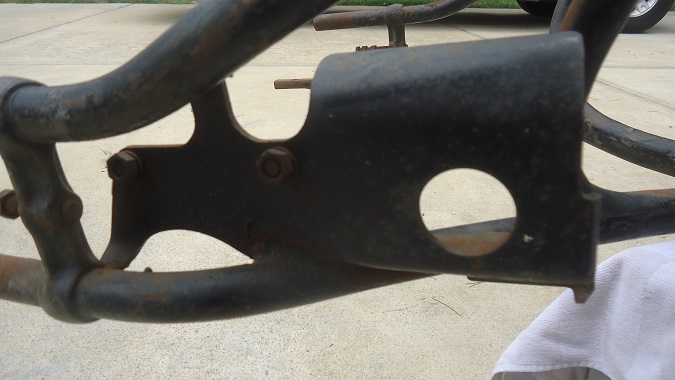
Inspection
Inspect frame closely for cracks, bent tubes, and damaged or missing mounts and brackets. A framing square can be used to check tube straightness.
A simple way to check for frame straightness is take two pieces of wood (like broomsticks) and place one in the neck tube and the other in the seat-post tube. Stand back from the frame a few feet and see if the two sticks line up straight or if one piece of wood leans to one side.
Frame inspection is crucial, not only for component fitment, but for the rider's safety.
TIP: Before assembling, double-check that all components fit before painting and final assembly.
Servi-Car Springer
Harley-Davidson trikes prior to 1958 have a springer-style front end with a neck cup size of 7/8".
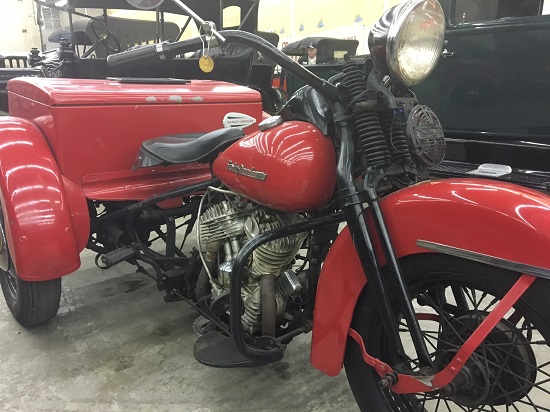
Hydraulic Front Forks
Nine years after Harley Panheads went from springers to "Hydra-Glide" hydraulic front forks, Servi-cars followed suit, using the same forks but with different triple trees. These later 1958-up frames have a slightly taller steering head and neck cup size increased from 7/8" to 1".
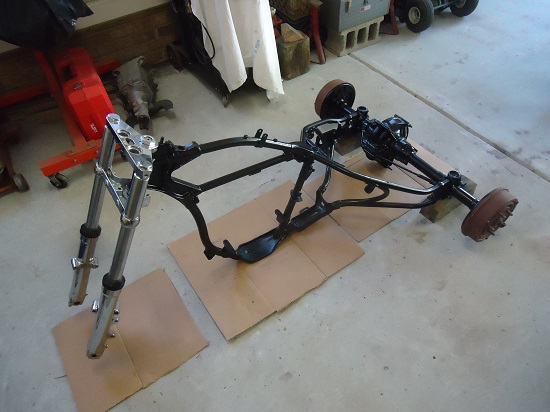
The hydraulic forks gave more rake than earlier springers, which increased trail length.
Install Springer On Later Frame?
The late G frames have a 1" stem, whereas earlier springer frames (1937 through 1957) had a 7/8" stem. A Big-Twin springer would fit, but the rake would be different, which may cause serious issues at higher speeds.
Horn Mount
On early springer models, the horn was mounted on the front end. With the advent of hydraulic forks, the horn bracket was relocated to the frame, behind the rider's right leg. All 1958 and later models will have this two-hole horn mounting tab, regardless of where the horn was mounted.
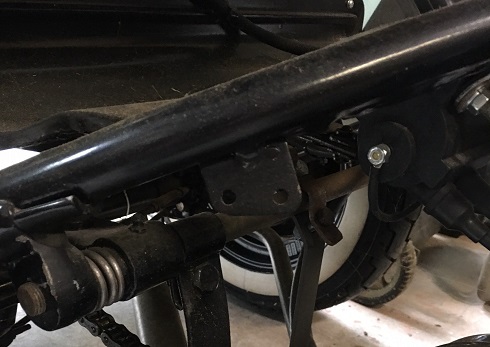
Servi frames up to about 1963 have a frame-post mounted battery box. Starting with 1964 electric-start models, batteries were often found in the cargo box.
Harley Seat Post and Bracket
Harley-Davidson Big-Twin, Flathead, and Servi models used one of two diameters of seat posts from 1929 through 1999.
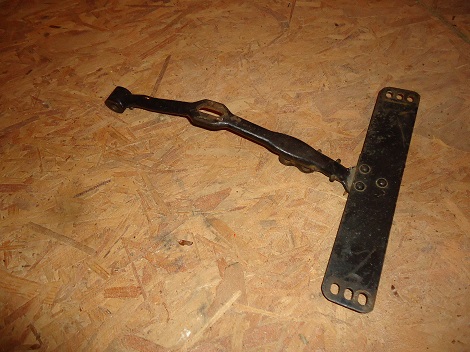
Most Knuckleheads, Panheads, and Shovelheads (up to 1981) have a seat post diameter of 1.18" diameter (bushing ID 1.185").
On 45" Solo bikes and Servi-cars from 1930 to 1973, the seat post diameter is 1.06" (bushing ID 1.065"). This smaller seat post also fits 1982 to 1984 FLH four-speeds, but not the five-speed FLT or FLHT. There are slight variations in the smaller seat bracket but they all interchange.
Frame Numbers
Up until 1969, the only factory VIN number is on the engine, located on the left case. There were no factory VIN numbers on any Harley frames until the 1970 model year.
Starting in 1970, all Harley-Davidson models had VIN #s on both the engine case and the frame. Beware of buying a 1970 or later Harley motor with no frame and registering it with the engine's VIN. It isn't going to be the true Harley title. Another person may be riding around in the frame with a different or aftermarket motor, and that bike is correctly titled off the frame number. If you get stopped and they run your VIN number, your bike gets impounded because there's another bike out there that is correctly registered with the same VIN.
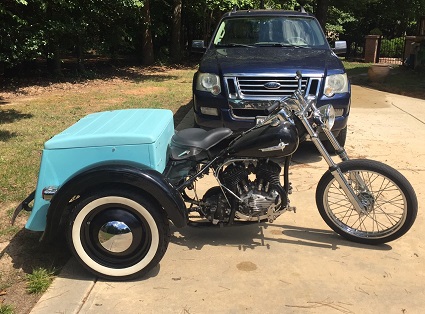
Engine VIN numbers usually started at 1000 each new year, but Harley-Davidson didn't necessarily assemble machines in numerical (serial number) order. an engine could have been held back for one reason or another. So, it's possible that an engine with a numerically lower VIN number may have reached the final assembly line after an engine which had a numerically higher VIN number.
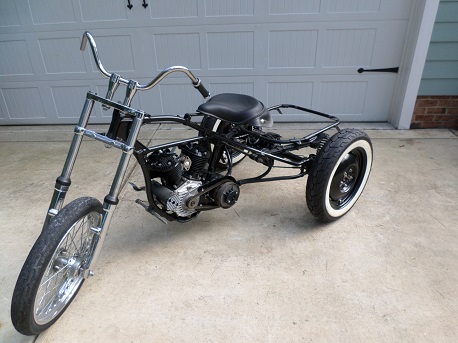
Read: 1961 Harley Servi-Car Project
=======================
Related Articles:
Servi-Car History
Harley 45 Flathead (W and G Series)
Servi-Car Rear Brake Overhaul
Harley Forks Identification
Harley 45 Frame Choices
